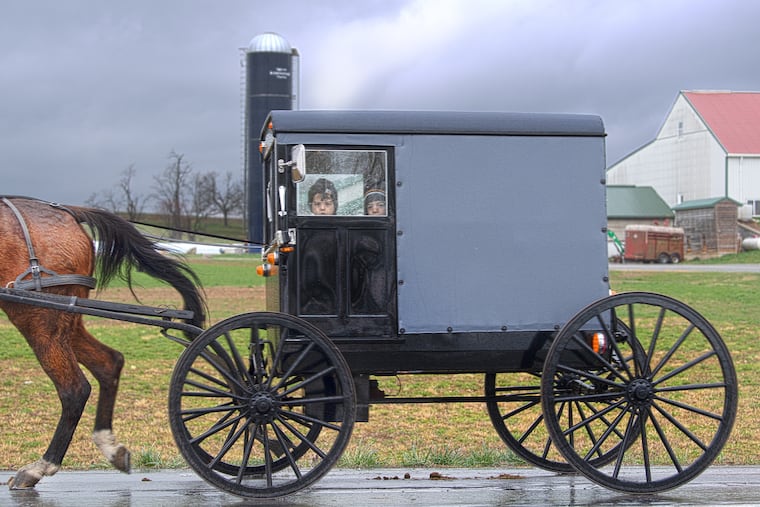More COVID cases in Lancaster County raise concerns as officials seek to determine virus’ spread among Amish
As Lancaster pushes robust COVID-19 testing, there are indications the Amish are eschewing the procedure.

The coronavirus is showing signs of spiking in Lancaster County, known for its bucolic farmland and large Amish population.
The county’s daily count of new COVID-19-positive test results has been trending upward, with an increase of about 135% from June 19 to June 25, according to state data. Statewide, the number of new cases grew over the course of that week by about 18%. Pennsylvania Department of Health officials are closely watching the increased case count there and in York County, just west of Lancaster, a spokesperson said.
“For these two counties, the majority of the cases are tied to known outbreaks, such as long-term-care facilities,” Health Department spokesperson Nate Wardle said.
York County saw a spike of cases on June 21, state data showed, but since then the daily number of new COVID-19 cases has dropped to 11, on June 25. Statewide, the number of daily positive test results has increased gradually since Thursday. The state does less sampling for COVID-19 than most other states in the country, but a low rate of positive results statewide has given the state breathing room as it increases testing.
Lancaster County officials agreed that nursing home infections were driving the numbers there, but said the increased cases reflected comprehensive testing at long-term-care facilities, rather than spread in the community at large. They didn’t rule out the possibility of wider transmission, though.
The extent of the virus’ spread among the county’s 39,000 Amish residents is unclear, officials said. Amish families typically avoid using technology due to their faith, but have differing philosophies about modern medical care. Anecdotal evidence, though, indicates many Amish and Old Order Mennonites are not seeking testing for the coronavirus, said Edwin Hurston, the county’s COVID-19 public health emergency adviser.
“We don’t know, because a lot of the Amish are not being tested,” he said. “They’re choosing not to be tested.”
Health-care providers are seeing people of Amish or Old Order Mennonite denominations with COVID-19-like symptoms, but those people are declining tests to confirm the illness, Hurston said.
» READ MORE: Pennsylvania does less coronavirus testing than almost every other state
The population could be at particular risk from the virus, experts have said, through church gatherings and because many households include older relatives. The county, which does not have a public health department, has sought to coordinate with some health-care centers in the area that have gained the trust of the region’s Amish population to grasp how significantly the virus has affected the community, Hurston said. The county has also hired contact tracers that speak Pennsylvania Dutch, a variant of German spoken in Amish communities.
The county tapped $95 million in federal CARES Act funding to make COVID-19 tests available to nursing homes for all residents and staff in mid-May, before the state mandated testing at those facilities. State records show there are 31 long-term-care facilities in the county.
“We are testing nursing homes more aggressively than almost anyone else in the state,” said Joshua Parsons, chairman of the Lancaster County Board of Commissioners.
The rate of positive results among all COVID-19 tests taken in the county was about 8% over the last 14 days, said Hurston, but he didn’t have the rate over the last week. In late April, he said, the rate was about 26%.
“We feel we’re doing everything we need to do to make sure our folks are protected,” said Ray D’Agostino, another county commissioner.
The county’s positive rate is comparatively high. The state’s positive rate is about 4%, officials have said. Philadelphia has a rate of about 5% over the last seven days, according to city data. Hurston noted that the Lancaster positive rate varied day by day, sometimes dipping to 5%
Positive rates should remain around 5% or lower for 14 days before a region should consider reopening, the World Health Organization has recommended.
» READ MORE: For Pennsylvania’s Amish, the coronavirus and the call for social distancing are a challenge
From June 19 to June 25, Lancaster County logged 363 new COVID-19-positive test results, accounting for about 10% of the state’s overall count of positives. The county’s population of 545,724 makes up about 4% of Pennsylvanians.
Lancaster County has reported 4,185 cases and 354 deaths since the beginning of the pandemic. The county moved to the green phase of reopening Friday.